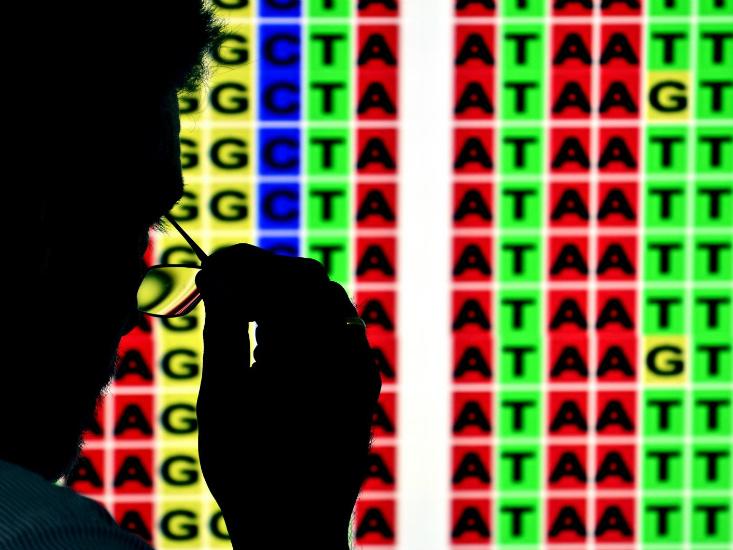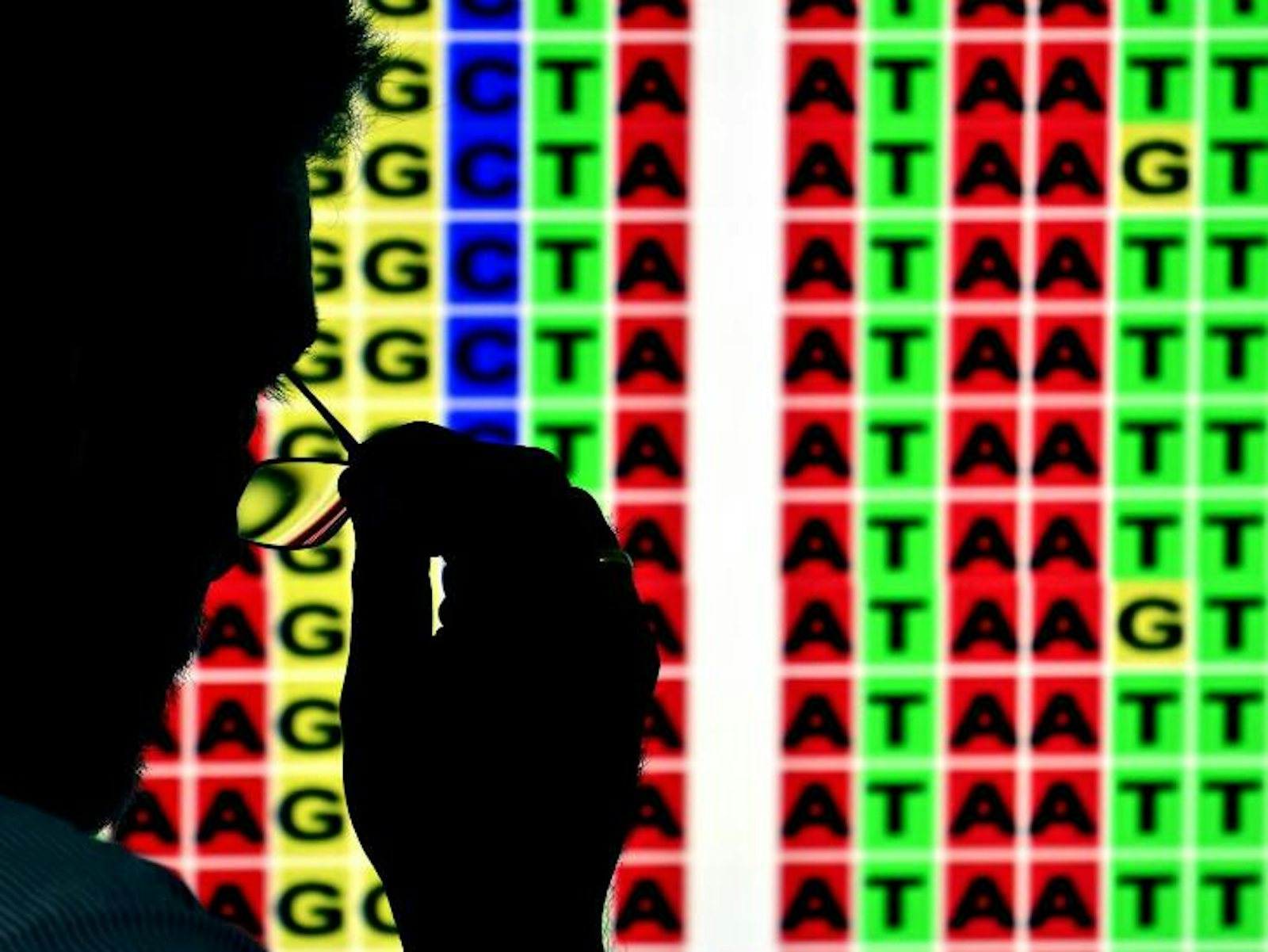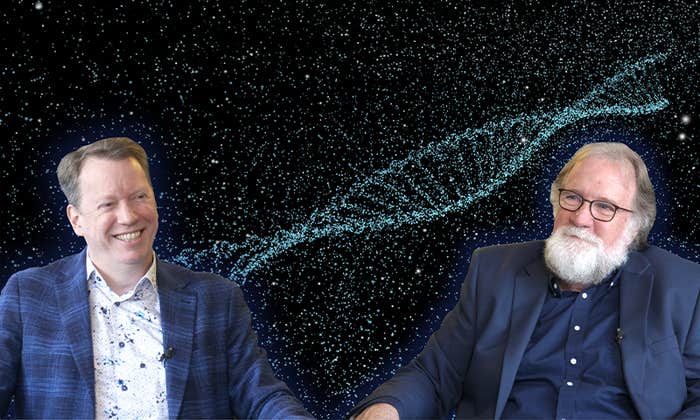
When we talk about genes, we often use expressions inherited from a few influential geneticists and evolutionary biologists, including Francis Crick, James Watson, and Richard Dawkins. These expressions depict DNA as a kind of code telling bodies how to form. We speak about genes similarly to how we speak about language, as symbolic and imbued with meaning. There is “gene-editing,” and there are “translation tables” for decoding sequences of nucleic acid. When DNA replicates, it is said to “transcribe” itself. We speak about a message—such as, build a tiger! or construct a female!—being communicated between microscopic materials. But this view of DNA has come with a price, argue some thinkers. It is philosophically misguided, they say, and has even led to scientific blunders. Scratch the surface of this idea, and below you’ll find a key contradiction.
Since the earliest days of molecular biology, scientists describe genetic material to be unlike all other biological material, because it supposedly carries something that more workaday molecules don’t: information. In a 1958 paper, Crick presented his ideas on the importance of proteins for inheritance, and said that they were composed of energy, matter, and information. Watson called DNA the “repository” of information.
Less than a decade later, George Williams, an influential evolutionary biologist, elaborated on this idea. He described genes to have a special status distinct from DNA, and to be the message that the DNA delivers. In a later work, he likened genes to ideas contained in books. A book can be destroyed, but the story inside is not identical to the physical book. “The same information can be recorded by a variety of patterns in many different kinds of material. A message is always coded in some medium, but the medium is really not the message.” In his book The Blind Watchmaker, Dawkins gives perhaps the most forthright description of this view: “airborne willow seeds… are, literally, spreading instructions for making themselves… It is raining instructions out there; it’s raining programs; it’s raining tree-growing, fluff-spreading, algorithms. That is not a metaphor, it is the plain truth. It couldn’t be any plainer if it were raining floppy discs.”
But do genes truly contain information in the same sense as words, books, or floppy discs? It depends on what we mean by information. If it’s the meaning represented by the words, books, or floppy disks, then no. Many philosophers agree that this kind of semantic information requires communication: an agent to create the message and another to interpret it. “Genes don’t carry semantic information, though. They weren’t made as part of an act of communication. So genes don’t literally represent anything, as people sometimes say,” explains Peter Godfrey-Smith, a professor of philosophy at CUNY.
“Airborne willow seeds are, literally, spreading instructions for making themselves. It is raining instructions out there; it’s raining programs. That is not a metaphor, it is the plain truth. It couldn’t be any plainer if it were raining floppy discs.”
Some philosophers argue that this confusion causes real problems—that, for instance, it is the reason scientists did not fully appreciate the significance of epigenetics until relatively recently. The focus on genes as carriers of semantic information discouraged scientists from looking for other influences on our biology, such as our environment. “Whereas genes are thus informational on this view, environments are not,” writes professor of bioethics Jason Scott Robert in his book Embryology, Epigenesis and Evolution. Epigenetics “was staring biologists in the face since the early 20th century but mostly swept under the rug as phenomena they couldn’t explain,” says James Griesemer, a professor of philosophy at University of California, Davis. DNA sequences were vastly more important than, for example, DNA methylation in shaping an organism, according to this view. For decades, this blind spot has held back our understanding of questions where some researchers have recently been focusing on epigenetics—for example, cancer, dementia, and heart disease.
Susan Oyama, professor emeritus at John Jay College, has spent her career pointing to evolutionary biology’s blinkered view, and describes this special focus on genes to be a metaphysical assumption about who we are. It’s “an intuition of an essence that tends not to be made explicit,” she says. She adds that this has had practical effects on the study of sex difference, because it encourages scientists to see difference as fixed and arising solely from our genetic blueprints.
Indeed, it seems were are only now just beginning to shake off the powerful hold genes have had on our imaginations. Chip Rowe’s story about genetic testing in this issue of Nautilus points to the ways we overemphasize the role genes play in predicting disease.
There is no need for an intelligent sender or receiver; the receiver can be a machine or even a protein.
This is not to say that the language of genetic information has not been very helpful, or that it should be abandoned. What these philosophers and thinkers care to do is draw attention to the ways that scientists fail to fully consider the language they use, and so inhibit scientific progress.
To avoid theoretical confusion, some researchers have adopted a different concept of information. In 1948 American mathematician Claude Shannon developed a way to measure data between a sender and a receiver. His theory has a few advantages over the semantic view of information. There is no need for an intelligent sender or receiver; the receiver can be a machine or even a protein. There is also no need to talk about representation, because all that matters is whether the data is successfully transferred—not whether someone understood the meaning of the message.
Using Shannon’s model, a gene can be said to carry information when its sequence is transferred from DNA to mRNA. “What’s present in all these cases is not a special sort of ‘informational’ relationship between things, but just ordinary causal relationships that are being described in a special quantitative way,” writes Godfrey-Smith in an email. That is, information in Shannon’s sense has no meaning, but does affect reality.
So, perhaps there’s really no information in genes, except in a metaphorical sense. And there’s really nothing wrong with using metaphors in science, as long as we see them for what they are. In the words of Herbert Spencer, a proponent of evolutionary theory and contemporary of Darwin, “How often misused words generate misleading thoughts.”
Regan Penaluna is a Nautilus editorial intern.


























